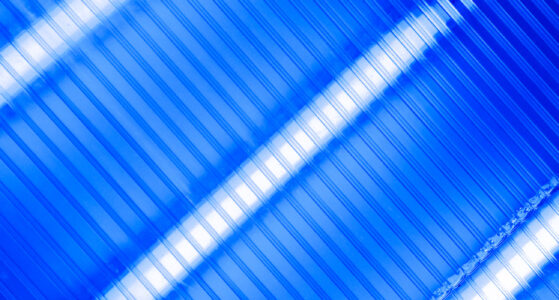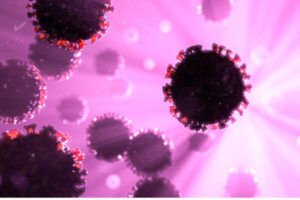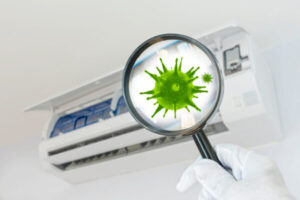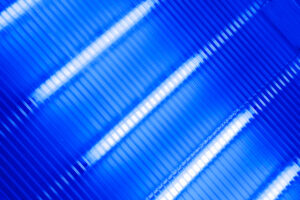 World events such as the global pandemic of COVID-19 have instigated much dialogue pertaining to Ultraviolet light disinfection as an effective way to disinfect homes, businesses, and medical facilities, including hospitals.
World events such as the global pandemic of COVID-19 have instigated much dialogue pertaining to Ultraviolet light disinfection as an effective way to disinfect homes, businesses, and medical facilities, including hospitals.
UV lamps are now being utilized in air, surface, and water disinfection systems worldwide to combat the spread of germs and improve the health and wellness of people everywhere. UVC lamps have been shown to be highly effective in combatting a wide range of bacteria and viruses, including the dreaded SARS-CoV-2 virus that causes COVID-19. UVC lamps for SARS-CoV-2 and UVC robots are being deployed in many healthcare and commercial facilities to stop the spread of harmful germs and improve the health and comfort of people in various commercial environments.
Modern disinfection applications are now utilizing the many benefits of UVC lamps, although it took many years since the discovery of germicidal UVC radiation for UVC lamps to become a “go-to” solution for disinfection.
The Discovery of UV Light Disinfection Dates Back Centuries
Ultraviolet (UV) light has proven effective at eliminating the threat from many well-known viruses, dating as far back as 1877 when the first scientific study was recorded, concluding that Ultraviolet light provided powerful disinfection properties. Further studies in the early 20th century confirmed that Ultraviolet light could prevent the spread of infectious diseases on surfaces and in the air, yet it would take many more decades for science and medicine to harness the power of Ultraviolet radiation.
With the increase of tuberculosis in the 1980s, Ultraviolet light was once again brought to the forefront of medicine and used to combat the spread of this highly contagious and deadly infection. The Centers for Disease Control and Prevention, CDC, offers guidelines for the use of UV lamps to combat tuberculosis infection. Ultraviolet lamps are now being used in many widespread germicidal applications to eliminate harmful pathogens in air, water and on surfaces.
Even with an increase in the use of UV lamps for disinfection, there are still many environments that stand to gain a great deal and improve public health by utilizing Ultraviolet light disinfection systems.
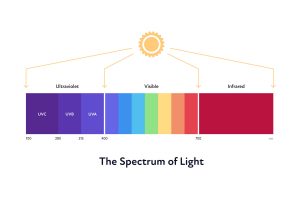 The Spectrum of UV Light: UVA, UVB, UVC
The Spectrum of UV Light: UVA, UVB, UVC
Ultraviolet (UV) light is electromagnetic radiation with a wavelength that is shorter than visible light and longer than x-rays, emitted at 100 to 400 nanometers (nm). The UV spectrum is divided into:
- UVA 315 to 400 nm
- UVB 280 to 315 nm
- UVC 200 to 280 nm
- Vacuum UV 100 to 200 nm
UV radiation emitted predominantly at 253.7 nm effectively inactivates microorganisms and is referred to as Ultraviolet germicidal irradiation (UVGI). UVGI interrupts the transmission of pathogenic organisms, including bacteria, viruses, mold, and even bioterrorism agents.
Ultraviolet Light Disinfection Effectively Eradicates Microorganisms
Infectious diseases are transmitted by various means, through human touch or secretions, droplets in the air, and on surfaces. UVC irradiation is proven to inactivate many microorganisms such as vegetative bacteria, spores, fungal spores and viruses. Individual species may be more resistant to UVC exposure and require the proper fluence rate for inactivation.
Vegetative bacteria, Staphylococcus aureus, includes individual species such as:
Viruses that are susceptible to UVGI include:
- Influenza viruses
- Measles
- SARS
- Smallpox
Both vegetative bacteria and viruses are generally most susceptible to UV inactivation, followed by microorganism groups, including Mycobacteria, bacterial spores, and finally, fungal spores.
Mycobacteria includes the following species:
- Mycobacterium tuberculosis
- Mycobacterium bovis
- Mycobacterium leprae
- Bacillus anthracis
- Bacillus cereus
- Bacillus subtilis
Fungal spores include:
- Aspergillus versicolor
- Penicillium chrysogenum
- Stachybotrys chartarum
Spore-forming bacteria and fungi also have vegetative forms, which are markedly more susceptible to UV inactivation than other spore forms. The effectiveness of Ultraviolet light disinfection for the inactivation of tuberculosis, measles, and influenza was established in various medical journals (Escombe et al. 2009; Mphaphlele et al. 2015).
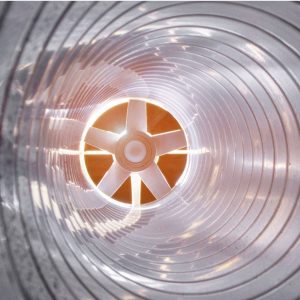 Ultraviolet Light Disinfection in Air Handling Units
Ultraviolet Light Disinfection in Air Handling Units
UVGI is proven to be effective in air handling systems to prevent the spread of disease through circulated air and on HVAC equipment surfaces. UVC disinfection is becoming increasingly popular as concerns about the quality of indoor air increases. Only a professional should install UVC lamps in your HVAC system, which can be beneficial in both furnaces and air conditioning (AC) systems.
Harmful pathogens such as measles, tuberculosis bacterium, and influenza viruses are all infectious organisms that are known to be transmitted indoors by shared air space between infected and susceptible persons. This occurs in congregated spaces, such as within a room, and beyond a room, such as in corridors and even through ventilation ductwork.
Low-pressure mercury vapor lamps are the standard source of UVC lamps in commercial systems, with an optimum wavelength of 253.7 nm. UVC lamps in air handling systems improve indoor air quality (IAQ), enhancing the health, comfort, and productivity of occupants.
UVGI for Residential Air Purification
According to a report by the Environmental Protection Agency (EPA) Indoor Environments Division in July of 2018, regarding the use of air cleaners for residential use, there are two types of UVGI applications for residences. UVC lamps are designed for airstream disinfection to reduce microorganisms as they flow through the HVAC system or they can be designed for surface disinfection to prevent microorganism growth on cooling coils in the HVAC unit. Numerous studies show that the most important components of a UVGI system are the type of UV light and ballast, air velocity, temperature, relative humidity, and duct reflectivity.
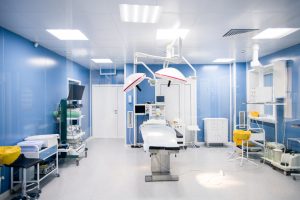 UVGI in Healthcare Facilities
UVGI in Healthcare Facilities
When UV lamp disinfection systems are used in air handling units (AHU) in conjunction with a particulate filtration system, efficacy improved to 98%. If a particulate filter removes 85% of agents from an incoming airstream and UVGI eliminates 85% of microorganisms with single-pass efficacy, it provides an effective incremental benefit. This study showed a reduction in CFU counts of 99% in just one month when Tier 1 UVGI in AHU was used in a major hospital in Mumbai.
The conclusion of multiple studies shows that UV light for disinfection in air and surface treatment systems is effective, economical, and flexible for hospital air disinfection with no residual side effects.
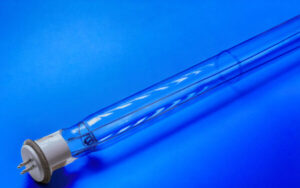 LightSources Offers Ultraviolet Light Disinfection Solutions
LightSources Offers Ultraviolet Light Disinfection Solutions
LightSources, along with our strategic partner, LightTech, provides benefits to OEMs of all sizes with proprietary, unique germicidal solutions. We provide UV lamps for disinfection applications such as:
- Air disinfection and HVAC UVGI
- Odor control
- Water purification
- Sewage treatment
- Food processing and protection
We offer a wide range of innovative, high-quality UVC germicidal lamps as well as custom-designed products to meet your specific application requirements. Our UV lighting engineers design high-tech UV lamps with custom phosphor blends based on a deep technical knowledge of UV radiation.
We provide full OEM support with prototype development and customized germicidal solutions. Our adherence to a strict quality policy as part of our ISO9001:2015 certification ensures quality products and processes to meet your specific needs.
LAMP PRODUCT DATA:
UV Germicidal LampsLAMP Applications:
UV Germicidal ApplicationsLightSources leads the UV lamp industry with innovative, first-to-market products and proprietary solutions which increase your brand awareness. We support OEMs worldwide with patent-protected, quality UV lamp solutions. Contact us to speak with an engineer about our high-performance, quality lamps for Ultraviolet light disinfection.
This post is also available in:
 Chinese (Simplified)
Chinese (Simplified)  Spanish
Spanish


